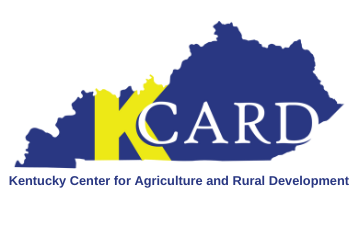There are lots of great resources available to Kentucky Producers. The Center for Crop Diversification offers budgets, horticulture profiles, and price reports. In our guest blog post by Brett Wolff, he discusses utilizing price reports in planning for next season.
The upcoming farming “off-season” provides an opportunity to rest, focus on other parts of life, and to prepare for next season. I wanted to offer a few tips and resources to jump-start thinking about your marketing, pricing, and cost accounting heading into 2021.
One of our most-used resources at the UK Center for Crop Diversification is our farmers market and produce auction price reports. While many people use these for setting prices on a weekly basis, the off-season allows for broader evaluation. As you take a look at previous prices (including our 3-Year Average reports linked below) ask yourself a few questions:
How did my sales compare to what I would like them to be?
Was I charging too much, too little, or just right?
Am I offering too many products, too few, or just right?
Was I selling out?
How did my pricing compare to that of other markets?
While selling out is validating and exciting, it may indicate your prices are too low. Not selling enough product may indicate a lack of interest (and a need for more active marketing), or that your prices are too high. These prices should also always be compared to how much it costs to produce, market, and deliver a product. If you find that $3 per pound is the perfect price for tomatoes in your market, but it costs you $3.25 per pound to produce them, then you are paying to produce tomatoes for your customers. Without an accurate picture of costs, you could very easily be losing money without realizing it. There may be times where it’s not possible for you to produce a product efficiently enough to make a profit. You may need to consider moving to a different market or discontinuing that product. This should be evaluated in the context of your entire operation (for example, tomatoes may be a good idea if they draw customers in for them to purchase more profitable products).
One way to get started with recording your costs is with enterprise budgets. We offer these through the CCD, but they are available from other universities too. They provide some estimates of typical costs, but they also provide a list of items to track in your record keeping.
Brett Wolff has been with the University of Kentucky Center for Crop Diversification for six years. Brett focuses on facilitation and communication, and he hopes to grow and strengthen regional ties and to continue building timely and useful resources for growers and extension professionals in the region.
Additional information:
3-year Average Weekly Prices at Kentucky Farmers Markets: 2016-2018 (https://www.uky.edu/ccd/sites/www.uky.edu.ccd/files/KYFM_2016-2018Avg_WOLFF_NANG.pdf).
Video: Online Resources: Setting Retail Prices (https://www.youtube.com/watch?v=PiUCc_ebZRM&t=6s&ab_channel=CCDUKY).
UK Center for Crop Diversification Budgets for various crops and enterprise scales (https://www.uky.edu/ccd/tools/budgets ).

